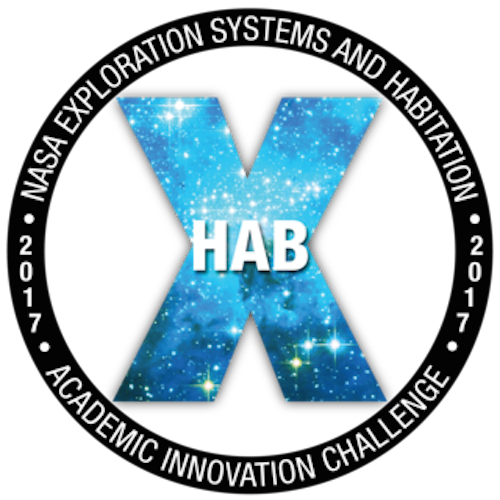.

NASA has released the sixth eXploration Systems and Habitation (X-Hab) Academic Innovation Challenge seeking innovative design solutions for deep space human exploration systems. NASA’s Advanced Exploration Systems Division (AES) sponsors X-Hab as part of its core function to develop foundational technologies and high-priority capabilities that are the building blocks for future human space missions. AES will offer multiple X-Hab 2017 awards of $10,000 to $20,000 each to design and produce studies or functional products that will increase knowledge and foster risk reduction for space exploration capabilities.
The X-Hab challenge series represents one of several platforms NASA leverages to solicit external solutions to complex challenges to keep humans healthy and productive in deep space and on the journey to Mars.
Read the full challenge solicitation: https://www.spacegrant.org/xhab
2017 marks the first year that the X-Hab challenge scope has been extended beyond habitation. “This year we wanted to think more strategically about the other vital space systems that could benefit from the creative thinking of some of the best young minds in the country” said Tracy Gill from the Research and Technology Office at NASA’s Kennedy Space Center in Florida. “The topic areas addressed in X-Hab 2017 highlight just a few of the capabilities that we must master before sending humans into deep space.”
The X-Hab 2017 challenge includes five topic areas for proposal:
In-space recycling/reclamation: designing an integrated 3-D printer and recycler that can manufacture and recycle polymer parts in a single unit.
Quantification of condensed water on Resource Prospector: creating a novel method for determining the quantity of condensed water to understand the feasibility of water capture on the lunar surface. Results of this challenge could potentially benefit the Resource Prospector, an in-situ resource utilization mission currently in formulation.
Wastewater to plant nutrient solution: developing a urine processing system that can harvest nutrients from crew urine for use in a plant food production system.
Microgravity plant watering system: developing a low-energy, reusable plant watering or nutrient delivery system that works in microgravity.
Microgravity food production system utilizing radial acceleration for water and nutrient delivery: designing and prototyping a rotating plant growth system for food production in microgravity with the long-term vision of expanding the artificial gravity technology for simplifying fluid systems and crew health.
Academic collaborations like X-Hab provide real-world, hands-on design, research and development opportunities for students who may be interested in space industry careers, while providing NASA with creative concepts for further study. In previous X-Hab challenges, products have been tested and evaluated at NASA centers and in analog field tests. The products and technologies that universities produce for the X-Hab 2017 challenge will be improved upon for next-generation exploration systems, and may eventually provide the basis for future flight demonstrations and exploration missions.
Faculty members must submit proposals for X-Hab by April 29. Potential proposers may submit questions to NASA until April 4, and NASA will publish the answers to all questions online by April 11.
Quelle: NASA
3851 Views
